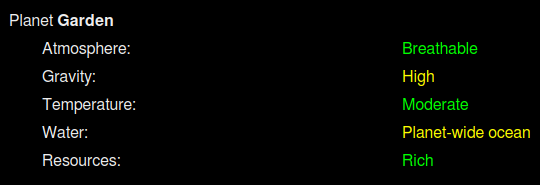Latest reviews
Comixology is the leading service for selling digital comics. The selection of comics is vast and prices are ok. It has an online site and mobile apps. The applications contain decent readers. Nothing customizable like YACReader or Perfect Viewer but they work. I should note that there is a quite handy feature for reading comics by frame by frame on mobile devices.
Most of the comics are spoiled with DRM but the platform itself doesn’t force this. Some comics are offered without DRM too. They can be identified with a small download icon next to the age restriction box in the respective store page.
So far everything is pretty good. The one huge flaw in Comixology is that the service is ridiculously slow. It’s not uncommon to have to wait a full minute before a page loads. This is just absurd given that Comixology is owned by Amazon, one of the world’s leading cloud service providers.
A practical tip: Before buying a comic from Comixology, check what it cost in Amazon Kindle store. Oftentimes you can get it with a about dollar less from there (at least when conversion rates are applied). And if your accounts are linked, comics bought from Kindle will be transferred to Comixology too. Just note that the inverse isn’t true. Comics bought from Comixology won’t end up in your Kindle library.
All in all, Comixology gets it borderline done, which is just what to expect from a modern business. I’d love to see a real alternative. Sadly, they are few and small.
Disclaimer: I don’t drink coffee. I use this thermos with the tea filter. Oftentimes they can be bought together. Still, I would imagine that most of my review will apply to coffee too.
This is a fine travel thermos for brewing quality tea on the go. I’ve often left home with just a bunch of leaves with me, and then asked for a fill of hot water from a coffee shop etc. No need to suffer from Lipton teabags.
The other use case is to make the brew at home and just stop the infusion by pressing the filter down before I set off. This method works pretty well too. The thermos keeps the tea hot for the better part of a day. That said, the seal between the leaves at the bottom and the main body of tea is not quite 100%. Some infusing will continue to happen even after the filter has been pressed down. This is my only complaint with this flask. (I don’t know whether the same holds for the coffee filter)
What this travel press really deserves credit for, is the open top side structure. Drinking through the typical nozzle will absolutely kill any fine aromas of the tea, whereas the open structure allows the aromas to escape to your nose while drinking. This is a crucial property for anyone who counts themselves as a serious tea (or coffee) hobbyist.

The topside has 4-wide holes for drinking. This allows aromas to escape to your nose while taking a sip. (Own work. License: CC-BY-SA.)
I’ve used this thermos over 4 years now. It certainly has passed the test of time. With regular cleaning and an occasional deep clean, all the parts have remained operational. I’ve never had to replace seals etc.
All in all it’s a fine thermos, and one of the rare ones with a built in press too. As an enthusiastic tea drinker, I recommend this thermos.
Der Name ist schon ein bisschen irreführend. Die Kuh ist in diesem Fall keinesfalls heilig und auch indisches Essen gibt es hier nicht. Es gibt hier - so ordinär das auch klingen mag - schlicht und einfach Burger.
Big Beef Burger mit groben Pommes und einem Eistee (Eigenes Werk. Lizenz: CC-BY-SA.)
Fleisch und Brot haben eine etwas labberige Konsistenz und sind recht geschmacklos. Das können Salat, Tomate und Ketchup auch nicht mehr retten. Einzig die Pommes sind sehr gut und retten die Bewertung für diesen Laden auf zwei Sterne. Ob es vielleicht Zufall war, das im bekannten Fastfood Restaurant nebenan sehr viel mehr los war als im Holy Cow? Ich kann es nur vermuten. Für diesen Laden ist der kurze Weg vom Hauptbahnhof noch zu weit. Schaut euch lieber nach einem anderen Laden um.
“And when they knew the Earth was doomed, they built a ship.” In one opening sentence, John Ayliff’s text-based browser game Seedship evokes stories of the journey to another world, of efforts to settle a new planet while avoiding the mistakes of the past.
1,000 colonists are all that is left of the human race, and they are asleep in hibernation chambers. You control a shipboard Artificial Intelligence that is meant to find a new home for humanity—a mission that will take thousands of years to fulfill.
You travel from one planetary system to the next, and you use scanners and surface probes to determine the suitability of candidate planets for human settlement. Does the planet have a breathable atmosphere, Earth-like gravity, tolerable temperatures, sufficient water and other resources?
Planets may hold other surprises for the colonists, from poisonous plants to high-tech ruins of previous civilizations. Based on all available information, you can decide to found a colony, or to keep searching.
Risks and Rewards
Every part of the ship, including the hibernation chambers, may be damaged during interstellar travel. On the other hand, you also have opportunities to upgrade your ship, which may improve your odds of finding a suitable home.
Ultimately, the success of your mission comes down largely to luck. You may find a lush paradise planet early, or encounter one toxic wasteland after another.

Seedship features no graphics, but its text-based interface, such as the scan results shown here, manages to convey a lot with few words. (Credit: John Ayliff. Fair use.)
What makes the game so enjoyable is the quality of the storytelling. Ayliff has stocked Seedship with many random events, from encounters with alien spaceships to the discovery of a brutal dictator among the sleeping colonists. Your choices (eject the dictator or let him sleep?) almost always have consequences, but those are often unpredictable.
When you decide that you’ve found the perfect (or at least adequate) new home for humanity, Seedship tells you about the fate of the colony. Did humanity maintain its previous level of technological achievement, or regress to a medieval level? Is your new society an enlightened utopia, or a tyrannical police state?
A single run can take only a few minutes, but you may find yourself playing Seedship for well over an hour to discover the different possible futures for humanity. If you enjoy sci-fi stories, I highly recommend giving it a try.
Mastodon ist im Prinzip wie Twitter (hier meine Rezension zu Twitter). Ein Kurznachrichtendienst für Texte mit bis zu 500 Zeichen. Im Vergleich spendiert hier Twitter dem Nutzer nur 280. Ich erinnere mich zurück an Zeiten in denen in eine SMS mit 160 Zeichen das höchste der Gefühle war. Es können Bilder, Videos und Audiodateien eingefügt werden. Andere Nutzer können benachrichtigt werden und auch das Erstellen von Umfragen ist möglich.

Screenshot der Weboberfläche einer Mastodon-Instanz (hier: Norden.social) Stand: 25. September 2021 (Eigenes Werk. Lizenz: CC-BY-SA.)
Warum ist Mastodon dann nur im Prinzip wie Twitter? Die grundlegende Aufbau dieses Netzwerks ist von den Emails bekannt. Jeder kann einen Server betreiben und auch mit jedem anderen Mastodonserver in Kontakt treten. Ein gemeinsamer Standard, das Protokoll ActivityPub, sorgt für die Kommunikation der Server untereinander. Das ist die große Stäke von Mastodon gegenüber Twitter. Dort sorgen die Betreiber für die Regeln und können nur durch Gesetze zum Handeln bewegt werden. Einen alternativen Server zu Kommunikation mit anderen Twitterbenutzern gibt es nicht. Ein weiterer Vorteil des genutzten Protokolls ist die Kommunikation mit anderen sozialen Netzen, die ebenfalls auf ActivityPub basieren. so können mehrere Netze mit unterschiedlicher Ausrichtung ein gemeinsames Netzwerk bilden, das sogenannte Fediverse. Im Netz gibt es ein Erklärvideo in englischer Sprache mit deutschen Untertiteln.
Leider ist die Akzeptanz noch sehr gering. Doch mit der zunehmenden Kritik der großen Social Networks wird meiner Meinung nach dieses Netzwerk eine immer größere Rolle spielen. So sieht es auch der Landesbeauftragte für den Datenschutz und die Informationsfreiheit Baden-Württemberg und ist seit kurzem mit einem eigenen Account vertreten nachdem das Konto bei Twitter gelöscht wurde.
Die meisten Instanzen sind spendenfinanziert, z.B. über Liberapay (zu meiner Rezension von Liberapay), und werden von den Moderatoren nach festgelegten Richtlinien moderiert.
Finches are known for their short lifespans, and so are the Finches, the troubled family whose story is at the heart of What Remains of Edith Finch.
You play as the titular Edith Finch, a young woman visiting the family’s haphazardly built home on Orcas Island, which was abandoned years ago. Each sealed room holds the story of a family member’s demise—and you want to know all the stories.
As you experience these individual vignettes, your perspective often changes to that of the family member in question. Perspective should not be confused with control: the game inexorably pulls you towards each character’s final destination.

Barbara’s room, one of the many you explore as part of experiencing the stories of the Finch family. (Credit: Giant Sparrow. Fair use.)
In its wistful, surreal style, Edith Finch is reminiscent of a Tim Burton movie like Big Fish; in its portrayal of a beautifully dysfunctional family, it calls to mind the works of Wes Anderson. But the game never feels derivative; it feels inspired.
Like a movie, it is very much on rails—you may very occasionally wander around for a few minutes wondering how to advance the story, but you’re unlikely to need a walkthrough, and there are no meaningful choices for you to make. That never feels limiting: like Edith, you just want to find out what happened.
There’s so much more to praise here: art direction that reaches soaring heights during some chapters (Lewis’ stands out); excellent voice acting especially by Valerie Lohman (Edith); music that will give you chills; an ending that holds nothing back.
I played the game on Linux using Proton without issues. Steam claims that I played it for 3 hours. The Finches may be short-lived, but Edith Finch will remain with me for much longer than that.
Wie viele Hubschrauber können auf engstem Raum untergebracht werden? Diese Frage beantwortet das Hubschraubermuseum in Bückeburg eindrucksvoll. Die Macher von Tetris wären schlichtweg begeistert.
Aussenansicht des Hubschraubermuseums in Bückeburg (Eigenes Werk. Lizenz: CC-BY-SA.) Von Spielzeugen über Modelle bis hin zu Exponaten in Originalgröße gibt es hier alles rund um das Thema Hubschrauber zu sehen und auch zu erfahren. Es gibt Funktionsmodelle, schematische Modelle und Ausbildungsobjekte zu bestaunen und teilweise auch zu erleben – bei einigen Modellen ist das Anfassen ausdrücklich erlaubt. Damit möchte die Ausstellung dem Besucher die Funktionsweise eines Helikopters erklären.
Helikopter im Hubschraubermuseum Bückeburg (Eigenes Werk. Lizenz: CC-BY-SA.) Neben den bekannten und weniger bekannten Modellen werden im Museum auch Exoten und nie geflogene Modelle und Prototypen gezeigt. Es ist erstaunlich, was im Laufe der Zeit alles erdacht wurde um den Traum des Fliegens, abseits von Flugzeugen, zu realisieren.
One-Man-Lift-System im Hubschraubermuseum Bückeburg (Eigenes Werk. Lizenz: CC-BY-SA.) Dieser Umstand ist für technikbegeisterte Besucher ein großer Vorteil. Ein Nachteil wird es dadurch für einen Familienbesuch. Kinder und nicht technikaffige Personen sind hier schnell durch und dann heißt es womöglich gelangweilt auf die interessierten Besucher zu warten. Dieser Umstand sollte vor dem Besuch unbedingt bedacht werden.
Von mir als technikinteressierter Person gibt es daher die volle Punktzahl.
Nina Guerrera (whose name means “warrior girl”) escaped a serial killer’s clutches when she was a sixteen-year-old girl; now she’s an FBI agent hunting predators. Due to a name change after her emancipation from her abusive foster parents, Nina’s would-be murderer was unable to locate her again. Nina was “the one that got away”.
A viral video that shows Nina fighting off a rapist comes to the killer’s attention, and he sets out to finish what he started. But hunting Nina is not enough. The viral video gave Nina the attention he feels he deserves. Through a series of murders, he provokes the FBI into a public manhunt. Soon, he is “The Cipher”, a murderer who leaves behind cryptograms, much like the infamous Zodiac Killer.
The Cipher is a an FBI procedural by Isabella Maldonado, a retired police captain turned crime writer. To make it a story of our times, Maldonado has her killer use social media to turn his crimes into a spectacle. The FBI and the social media sites collaborate to keep the killer online, in hopes of tracking him down.
What if Zodiac Killer, but on Facebook?
This leads to wildly implausible plot developments, where “The Cipher” maintains a public leaderboard on his Facebook page, ranking the amateur investigators around the country who try to break his (often very simple) codes. Similarly, he is permitted to repeatedly post videos of horrific crimes to an audience of millions.
If you can believe that, you will probably not have an issue with the book’s more conventional tropes, such as the idea that an FBI agent would be allowed to lead an investigation while being very publicly threatened with rape and murder by its target, who previously raped and almost killed her.
Maldonado moves the plot forward at a steady clip, and The Cipher is certainly an easy read—I read most of the book on a transcontinental flight, and downloaded it for free through Amazon’s “First Reads” program. Maldonado deserves credit for writing in a very accessible manner, e.g., about investigatory procedures; she also sometime subtly repeats important plot points to help the reader along.
These are the kinds of writing techniques that make this book a page-turner. The positive reviews the book has received suggest that many readers found it thrilling. Maldonado has already written one additional novel featuring Guerrera, and there are plans for a Netflix adaptation of The Cipher.
For me, the many plausibility issues make it difficult to recommend the book, in spite of a likable heroine.
A spider-like extraterrestrial emerges from a spaceship parked in front of the Royal Ontario Museum in Toronto, enters the museum, and requests to speak with a paleontologist. It’s a great opening for Robert J. Sawyer’s Calculating God, a story mostly told in the first person from the point of view of said paleontologist, a man with the ominously biblical name Thomas Jericho.
The alien, who is named Hollus, reveals quickly that their species, the Forhilnor, believes the existence of God to be a scientific fact. Hollus wants to learn more about extinction events in Earth’s history.
Mild spoilers (click to reveal)
The Forhilnor have found evidence that mass extinction events have occurred at approximately the same time on multiple planets now inhabited by intelligent life—apparently including the extinction events in Earth’s history. In addition, they believe that the evidence for a universe fine-tuned to support life cannot be explained except by an intelligent designer.
Thomas Jericho is a staunch atheist, but Hollus is not religious in the conventional sense. The two scientists become friends as they study the fossil record of Earth and other planets. Will Doubting Thomas come around to see the evidence of the designer? And what are two American anti-abortion terrorists planning to do in Toronto?

Like Saint Thomas (depicted in this painting by Caravaggio), Tom Jericho demands strong evidence before accepting extraordinary claims.
Intelligence by Design
In exploring the evidence for God, Sawyer stacks the deck in favor of a designed universe. In addition to made-up discoveries by the extraterrestrials, he revisits creationist canards like the idea of irreducible complexity, of “missing links” in the fossil record, and of lack of evidence for speciation.
The book was published in 2000, and as Sawyer has stated, he was influenced by neo-creationist literature such as Michael Behe’s “Darwin’s Black Box”. This was before Kitzmiller v. Dover, a key lawsuit in 2005 which set back the so-called Wedge Strategy to use the pseudoscience of “intelligent design” as a backdoor to introduce creationism into schools.
But even in 2000, plenty of scientists and skeptics had extensively debunked the arguments Sawyer has his characters regurgitate (see, for example, the talk.origins FAQs). It’s one thing to invent evidence for an intelligent designer that serves the story; it’s another to rely on pseudoscience. In Calculating God, Sawyer does both.
The Verdict
In spite of this, I found the book more engaging than The Terminal Experiment (review), and less dated. Parts of Calculating God feel like a theater play, a big story told on the small stage of a Canadian museum, with charming characters and a sense of humor and self-awareness.
Hollus, the extraterrestrial visitor, is very memorable: truly alien in appearance but, at the same time, witty and relatable. Their human counterpart, Tom Jericho, comes to life in small details such as his political disagreements with the museum’s administration. The friendship between Jericho and Hollus is believable and carries much of the book forward.
Ultimately, however, Calculating God takes itself too seriously. In the last third of the book, increasingly implausible events lead towards an ending that is only a poor imitation of works that have surely inspired it, such as Carl Sagan’s Contact and Arthur C. Clarke’s 2001: A Space Odyssey.
NewPipe is a easy to use YouTube client that also supports other sources like SoundCloud oder FramaTube (both beta). It automatically blocks ads and has a built-in subscription feature, where you can also group channels e.g. to a catagory “LetsPlays”. You don’t need (and can’t use) a google account - so commenting and likes are not available.
I highly recommend using it, after I subscribed to some channels it became my daily YT client
